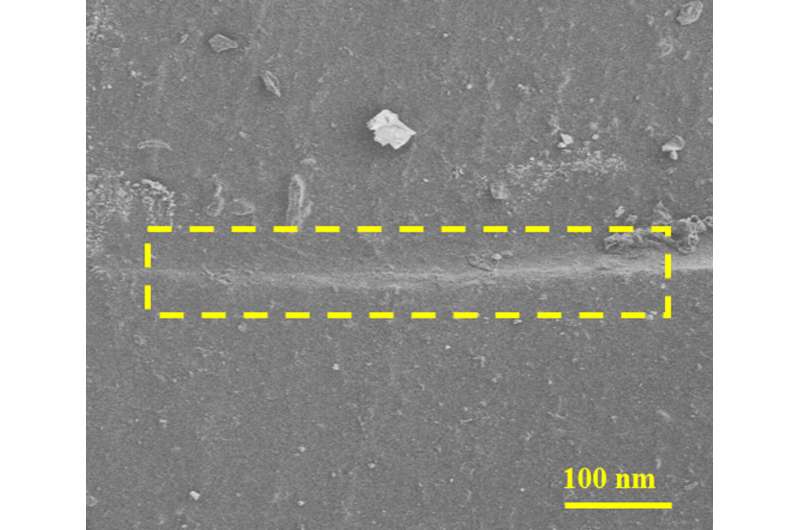This article has been reviewed according to Science X's editorial process and policies. Editors have highlighted the following attributes while ensuring the content's credibility:
fact-checked
proofread
Scientists develop self-healing elastomer for flexible electronics

Scientists in China have fabricated a high-strength elastomer with self-healing properties. The polymer has significant potential in the field of flexible electronic devices.
In a study, published in Polymer International, researchers from a consortium of universities across Shanghai, China, have described a new poly(vinyl alcohol) (PVA)-based elastomer that can self-repair after damage, to maintain shape and performance. The flexible polymer is a solution to a longstanding issue with the durability of flexible electronic devices.
In recent years, flexible electronics have been attracting a lot of attention across multiple industries, with potential applications including flexible patch sensors to monitor blood glucose concentration, and flexible energy storage devices for wearable electronics. Currently however, the long-term stability of such materials is an issue, as Dr. Zili Li, Associate Professor at Fudan University, China, and corresponding author of the study, explained.
Speaking to SCI, he said, "Flexible polymer materials have been extensively explored in electronic devices, especially for health care and AI science. We want to solve the long-term reliability of the polymer matrix, which may be broken due to the external force damage, corrosion, or fatigue during operation."
The study focuses on improving the properties of PVA, a polymer with excellent mechanical properties, but with poor stretchability and self-healing performance due to strong intramolecular and intermolecular bonds.
By using a one-step esterification reaction, the researchers added side chains onto the main PVA backbone, to create a graft polymer and subsequently incorporated Fe3+ ions into the matrix.
The resulting polymer had good stretchability (fracture elongation of 1565.0%) and self-healing performance (self-healing efficiency of 53.4% at room temperature) while maintaining excellent mechanical properties.
The team tested the performance of the graft polymer by coating the elastomers in a silver nanowire network to create a strain sensor. The resulting sensor exhibited high sensitivity and good self-healing performance. The authors noted that this result demonstrates "the wide potential applicability of the prepared PVA-based elastomers in health care, electrocardiography and safety monitoring."
More information: Xingran Xu et al, Tailoring high mechanical performances of self‐healable poly(vinyl alcohol)‐based elastomers via judicious grafting of side chains, Polymer International (2023). DOI: 10.1002/pi.6515
Provided by Society of Chemical Industry





















